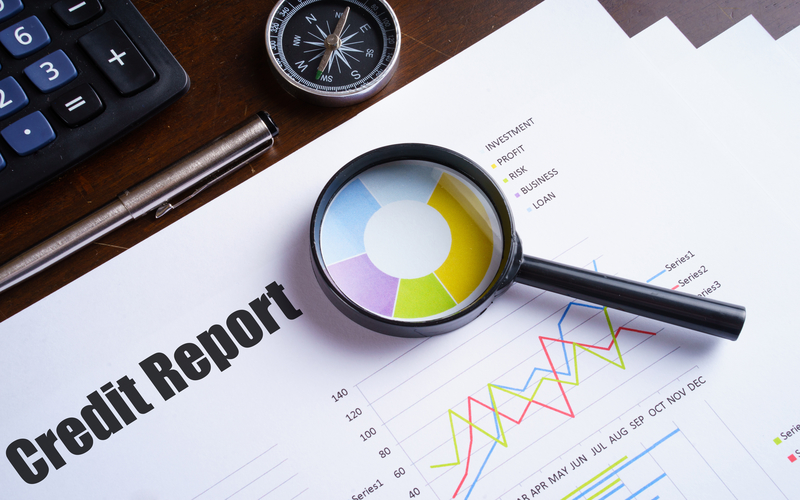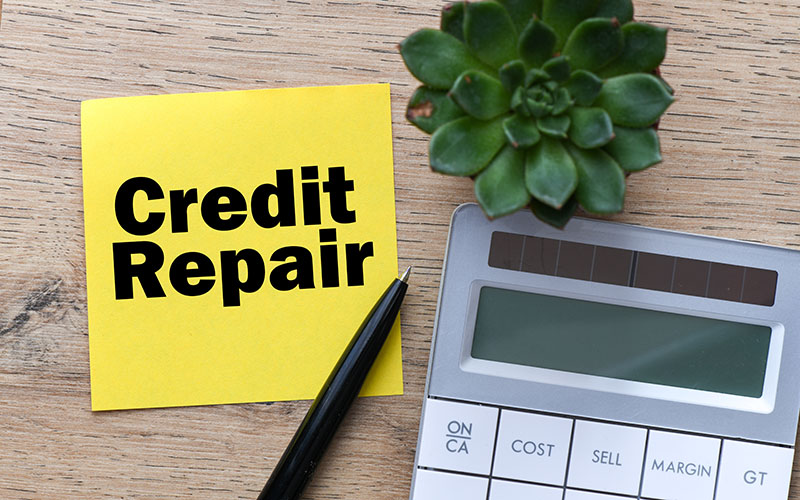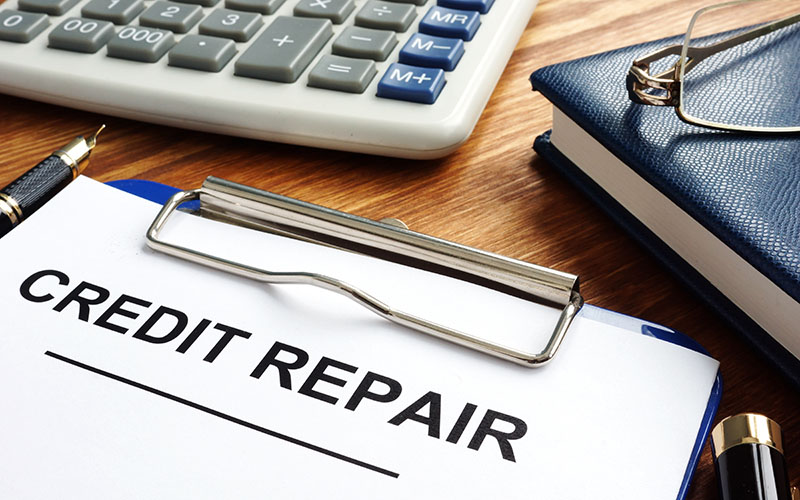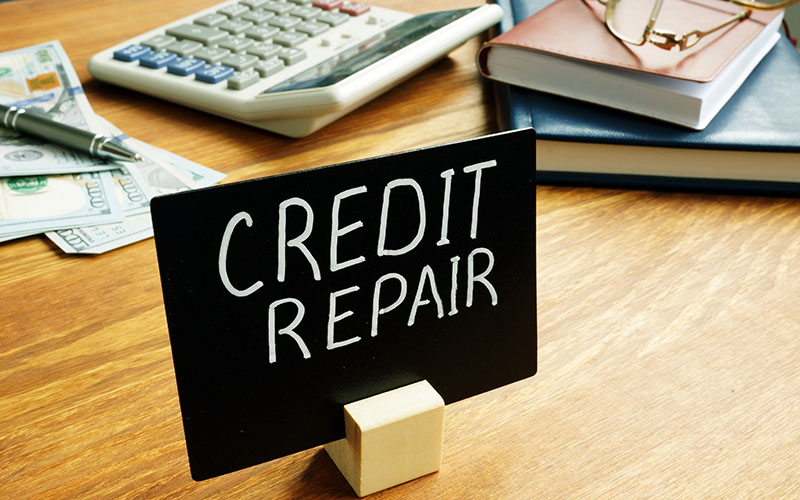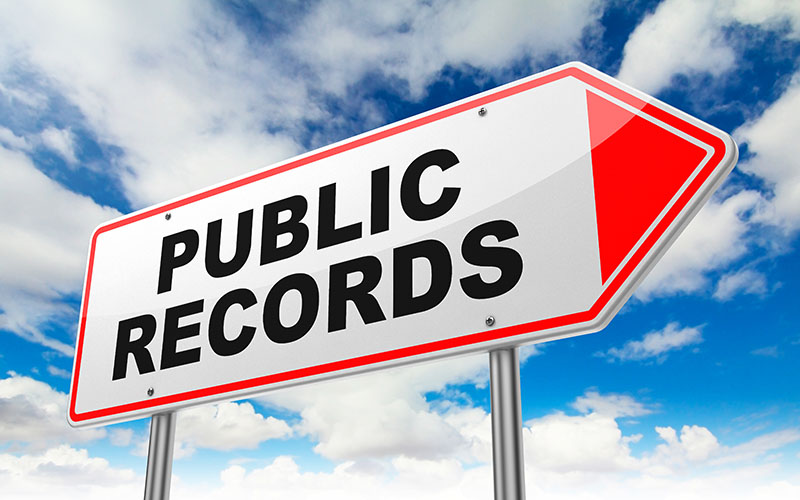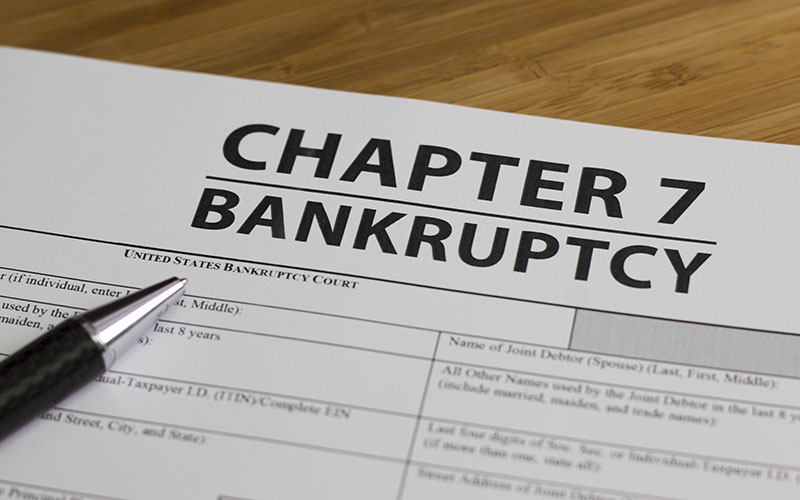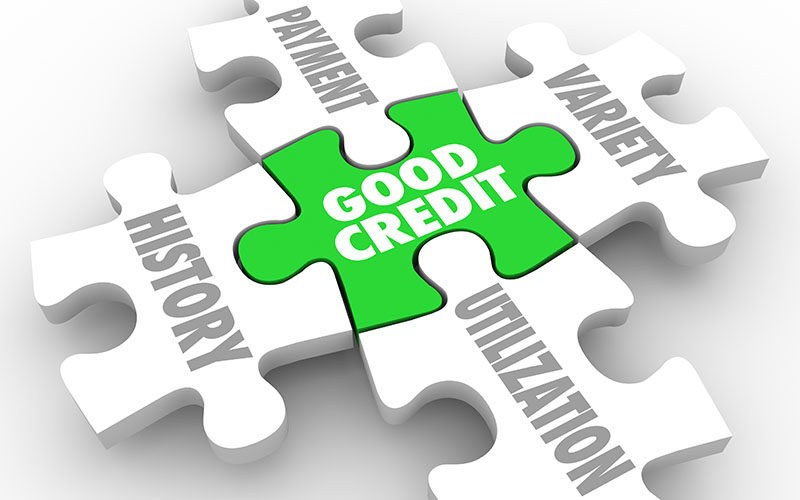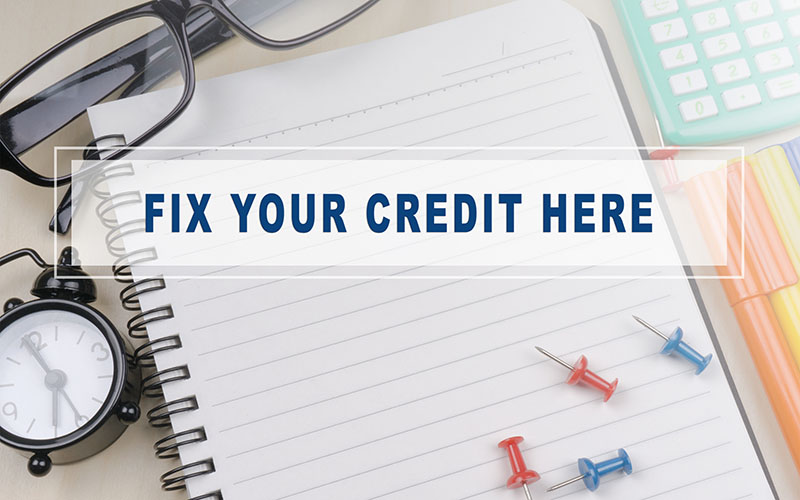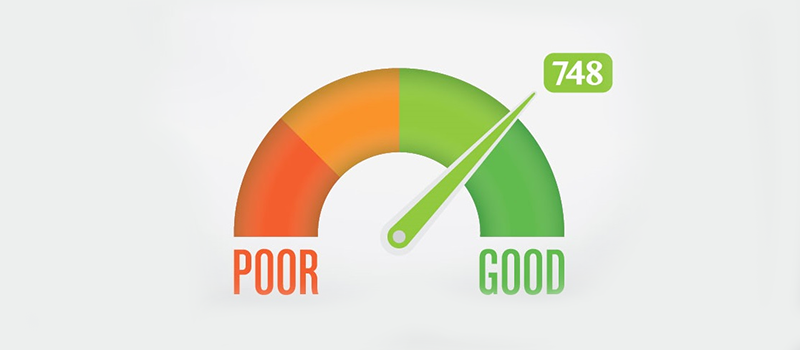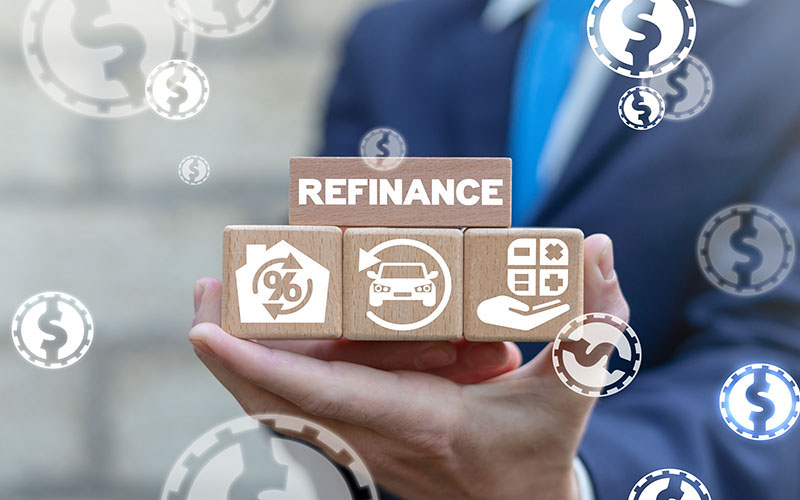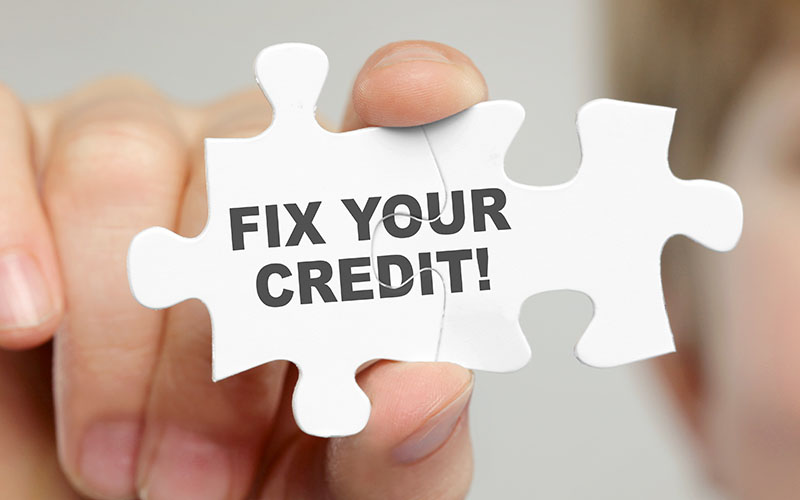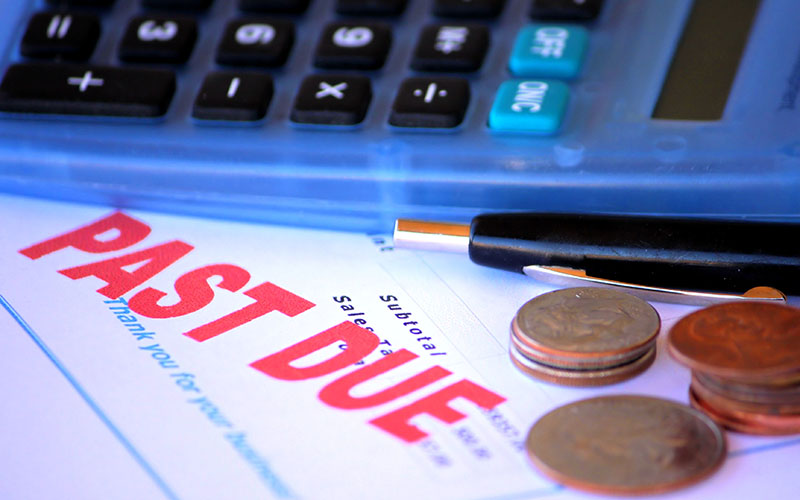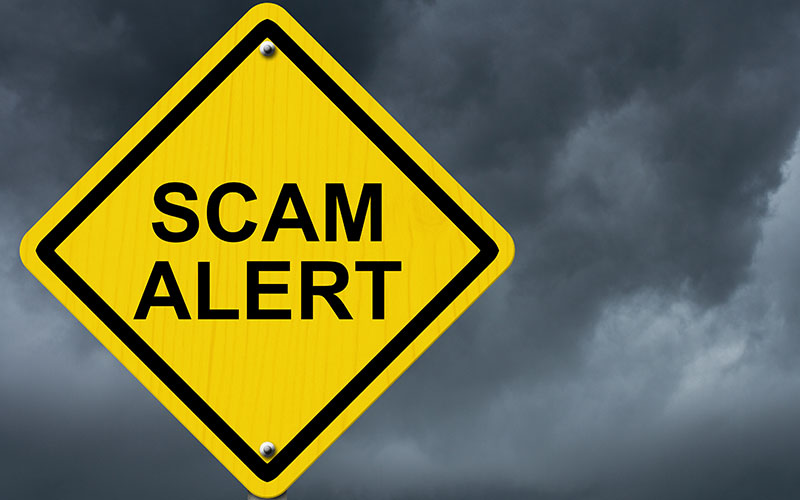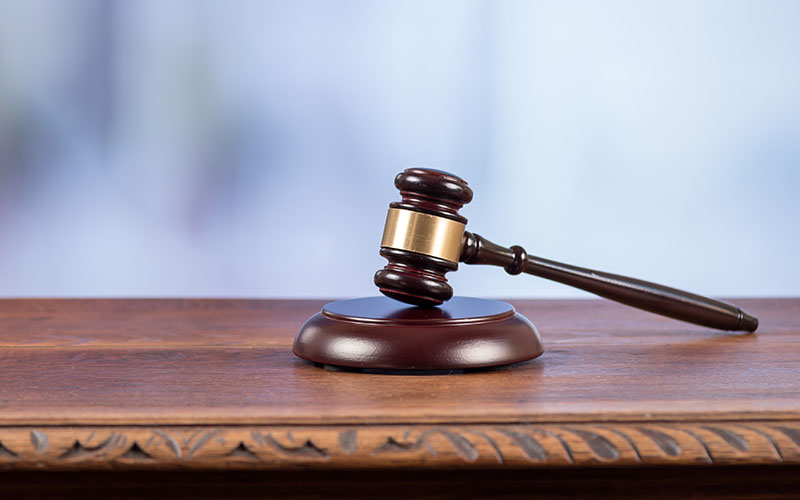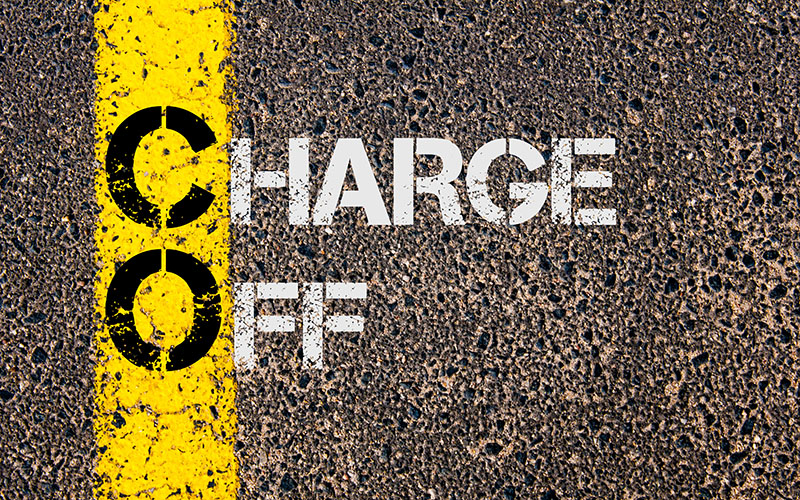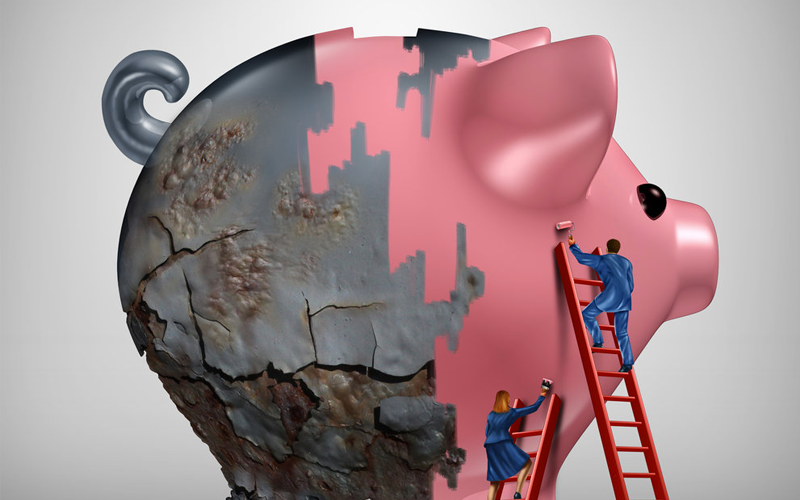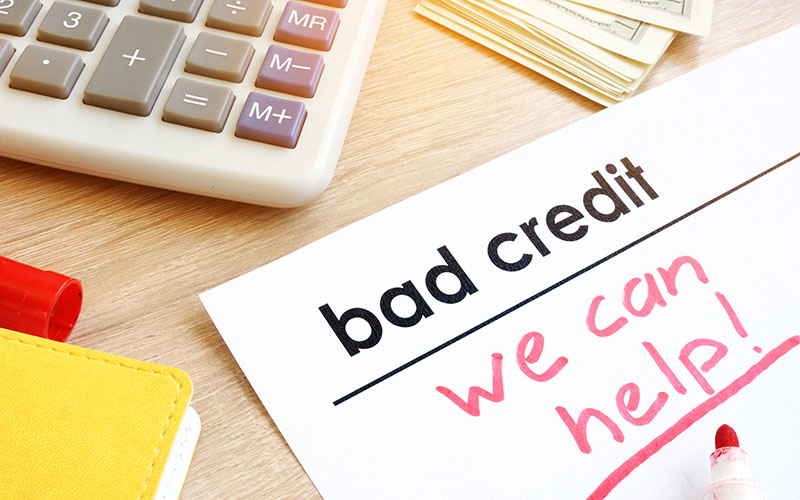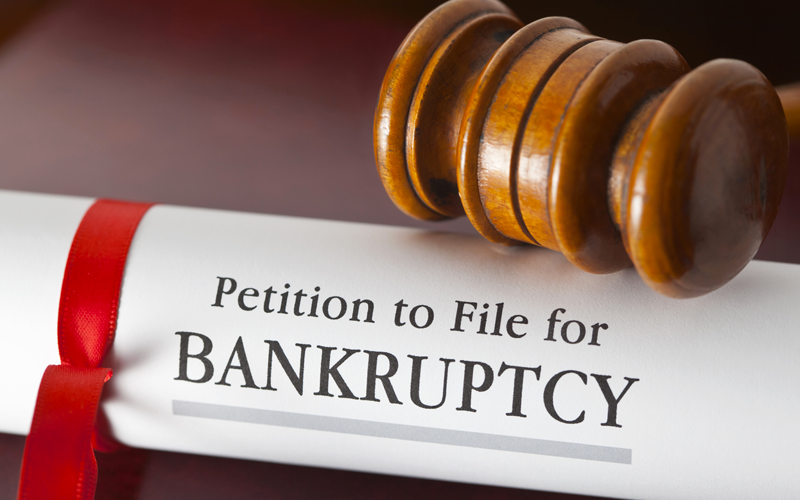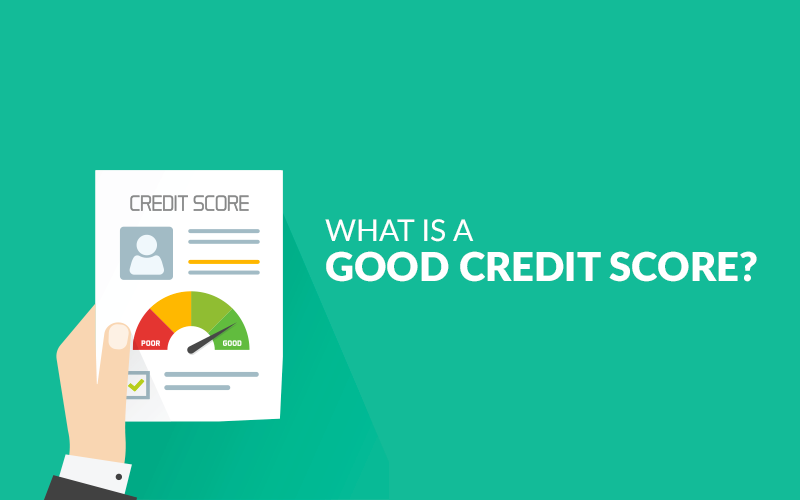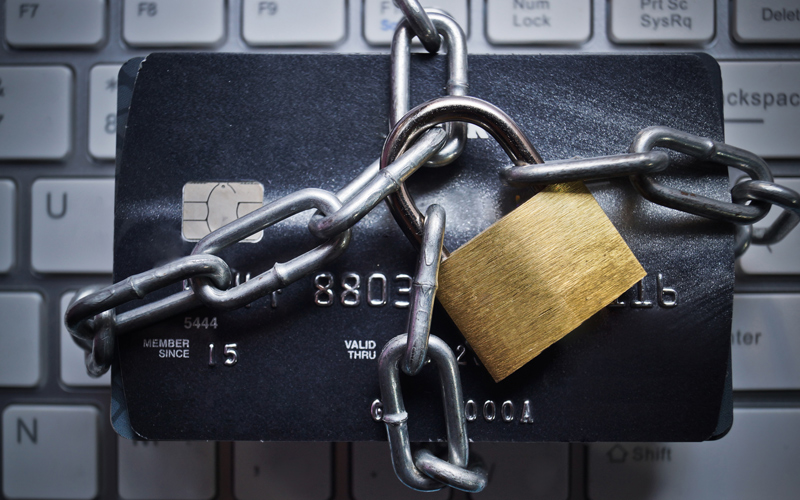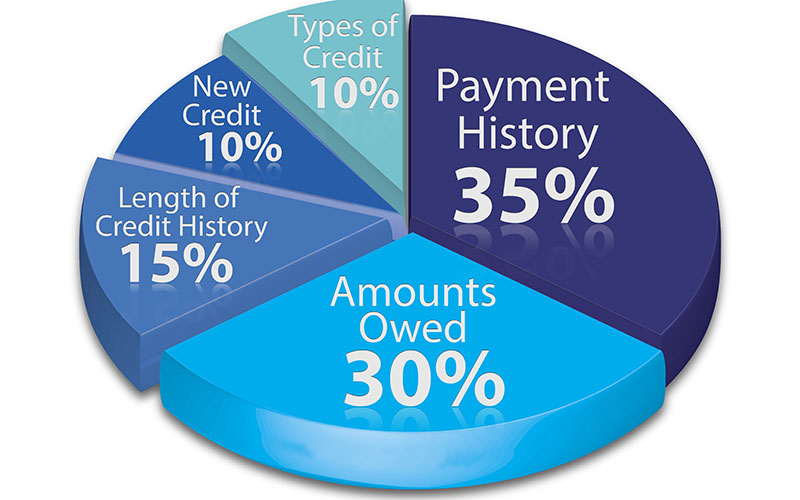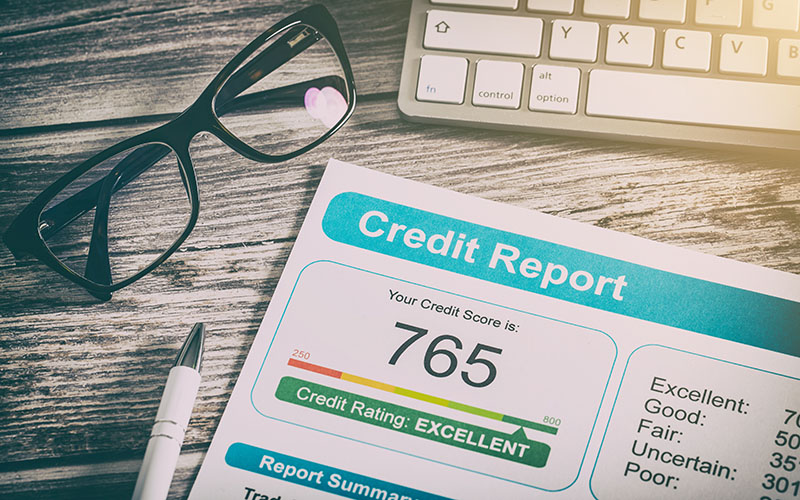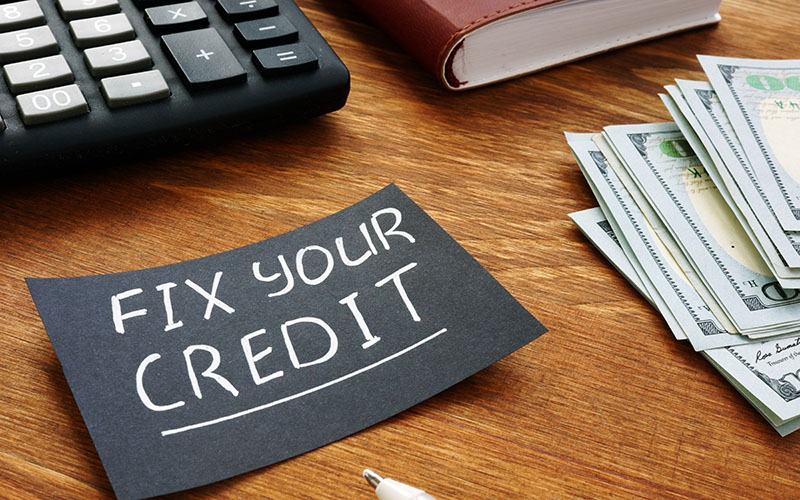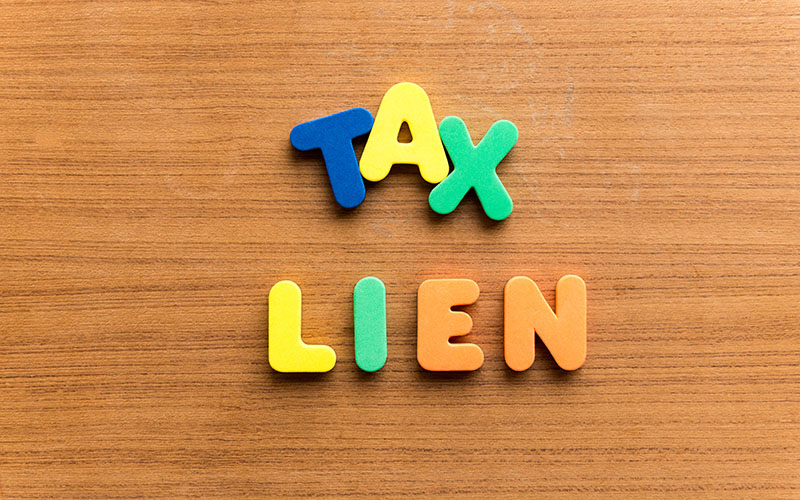The Guide To DIY Credit Repair
Key Takeaways
- Your credit score affects loan approvals and interest rates, so improving it can save you money
- Credit repair involves disputing inaccurate or unverifiable items on your credit reports from the three major bureaus
- You can check your credit reports for free annually and begin disputes by mail for better results
- Key credit score factors include payment history, credit utilization, and credit history length
- After repairing credit, maintain good habits like paying bills on time, monitoring your credit, and keeping credit utilization low

Your credit score plays an important role in your finances. It determines everything from your interest rates on loans to whether or not you even receive a loan or a new credit line.
Fixing your credit score through credit repair can improve your odds of receiving better interest rates and deals on loans and credit cards. Credit repair is a process in which you can dispute and remove innacurate or unverifiable items on your credit reports from the three bureaus (Experian, Equifax, and TransUnion) to improve your score.
Improving your credit score doesn't happen overnight. It usually takes a few months or years to reap the full benefits but the end results are certainly worth the wait. A good credit score allows more opportunities to acquire better credit cards and better interest rates for loans and mortgages, which can save you hundreds or thousands of dollars in the long run.
Although it's advisable to hire a credit repair company to do the time-consuming legwork for you, it's also perfectly fine to undertake the credit repair process on your own. There is no reason that you cannot accomplish what a credit repair company can, but before you proceed, you should become familiar with the ins and outs of credit repair.

Step 1: Check Your Credit Score
Simply put, your credit score is a number that shows lenders how reliable you are at paying back your debts. This allows lenders to choose if -- and how much -- credit they extend to you.
Your credit score is not affected by your income and career, and it is not provided by lenders like your bank and credit union, but by third party companies.
There are hundreds of different credit scores, but the ones that are used most commonly are your FICO scores from Experian, Equifax, and TransUnion. The scores from each bureau will not be exactly the same but they should all fall in a similar range.
These scores are used for many reasons:
- They help banks and credit unions decide if they approve you for a loan or mortgage.
- They determine the interest rates paid on loans. A higher credit score allows you to qualify for lower interest rates.
- These scores are sometimes used when a business is hiring new employees. A high credit score is seen as positive since this shows steady payments and dependability.
- A good credit score may lower your security deposit when you are renting an apartment or home.
- Your cell phone bill may also be based on your credit score.
Step 2: Know What Affects Your Credit Score
Your credit report allows lenders to look at several factors, including total debt, debt to income ratio, types of credit, debt history, and derogatory marks.
Creditors report your financial information to the bureaus (sometimes only one and sometimes all three). This information is put through a scoring model that results in your credit score.
Factors that affect your FICO credit score include:
- Payment history: This accounts for 35% of your credit score. The amount you have paid each month for your debts appear in comparison to the monthly total. Late payments are listed with how late they were, either 30 to 150 days, and they can stay on your credit report for up to 7 years. The later your payment, the more your credit score drops.
- Credit utilization: Your credit utilization (how much debt you owe compared to your available credit) makes up 30% of your score. Credit card debt is weighed more heavily than mortgages and student loans. The more available credit you have, the better your score. By paying off credit card debt and increasing your available credit line, you can attain a higher score.
- Credit history: The length of your credit history makes up 15% of your credit score since it shows creditors that you have a reliable history of paying back your loans. The longer your credit accounts (like credit cards, loans, etc) have been open, the better your credit score.
- New credit lines: 10% of your credit score is made up of inquiries that are made during the previous 2 years. Inquiries take 5 points off your credit score in the first year unless there were multiple inquiries made in the same time period, which simply shows that you were in the market for a new credit card or loan. You can always reduce the number of inquiries you make to result in an improved credit score.
- Types of credit: 10% of your score consists of different types of credit. Revolving credit (like credit cards and retail cards) is not weighed as heavily as an installment loan, which has something of value like a house or car attached to it and shows creditors that you are committed to paying it off. Student loans show creditors you are invested in your potential earnings in the future, which eventually helps you pay off your debts.
Step 3: Get A Copy Of Your Credit Report
The Fair Credit Reporting Act (FCRA) outlines consumer protection laws in regard to credit repair and informs you of your rights when working with credit bureaus, creditors, and collection agencies.
The FCRA allows you to receive one free yearly copy of your credit report at AnnualCreditReport.com. After entering your personal information and answering security questions, you can download all three reports. If you prefer, you can also ask to have hard copies mailed to you.
(Note: You can also access your Equifax and TransUnion credit reports anytime through Credit Karma by creating a free account, filling out the required information, and confirming your identity.)
In order to get the most accurate results, you should order all three of your credit reports since some creditors may only report to one credit bureau instead of all three. Credit bureaus generally do not share their information, so the information on your credit reports may differ slightly.
In some states and under certain circumstances, you are also eligible to receive more than one free copy of your credit report:
* If you are denied an application due to information in your credit report, you can receive a notice with the bureau’s contact information and have sixty days to contact the bureau for a free report. * You are unemployed but looking for a job in the next sixty days * You are on welfare. * You have been the victim of identity theft or identity fraud.
The FCRA also limits who can access your credit report by making sure any inquiries have a purpose, which prevents damage to your credit score and allows unauthorized inquiries to be removed during the credit repair process. Additionally, while bankruptcies, foreclosures, and other negative items to stay on your credit report for 7 to 10 years, incorrect and unverifiable items can still be disputed before this time period is up.
Finally, the FCRA ensures that if you file a dispute with the credit bureaus, they must respond within 30 days. If a creditor violates this by not correcting the error on your credit report, you may be eligible to receive $1,000 in damages.
Step 4: Dispute
When you look through your credit report, you will find personal information, any negative items, account information, and credit inquiries.
Any personal information that is incorrect (like your name, address, previous addresses, phone number, Social Security number, and employer) may indicate a simple error or something much more serious like identity theft or identity fraud.
Neutral and positive items stay on your credit report indefinitely, so if you make good financial decisions, your credit score will improve. However, negative items stay on your credit report for up to 7 to 10 years. Since these older items drop off after some time, disputing more recent inaccurate and unverifiable negative items will be more beneficial.
Your first step in disputes is to look at all the negative items listed under each bureau carefully, since they all have slightly different items listed.
Although each credit report has a different method of presenting their information, they usually list the following:
- Personal information such as your addresses, employment history, name, and Social Security number.
- Your types of accounts, including installment accounts, credit limits, debts, loans, joint accounts, revolving accounts, and any accounts in collections.
- Public records, especially those about financial obligations.
- Consumer statements, like a statement of dispute in the case that you do not agree with your lender about the status of your account.
- Any hard credit inquiries, which show if you applied for new credit or services.
- Any soft credit inquiries, which show requests made by lenders or any requests made by you. These soft inquiries can only be viewed by you.
- Any missed payments, including past-due amounts, late payments, and mortgage payments. This makes up the biggest portion of your credit score, so if you spot any that are incorrect, make sure to dispute them.
- The length of time you have used credit. The longer you have had a credit account, the better your credit history is.
- The types of accounts and the different types of credit you have.
Negative items to look for include:
- Bankruptcies: Bankruptcies drop off your credit report no later than ten years after they were filed. The amount of time it takes also depends on the type of bankruptcy that was filed. Chapter 13 bankruptcies stay on your credit report for seven years while Chapter 7 bankruptcies stay on your credit report for ten years.
- Charge-offs: These past due payments occur when debts are no longer collectible by creditors. Instead of the debts being past due, creditors eliminate them by selling it to a debt buyer. The debt buyer then tries to collect the debt amount and additional charges like late fees and interest. Although they are no longer collectible by creditors, they should still be paid as soon as possible.
- Collections: Collections affect your score than most other negative items since more recent debt makes up a higher percentage of your credit score. Accounts in collections show if it is paid, unpaid, when it was opened, and the balance. Items that appear include medical bills, loans, and even smaller debts like unpaid parking tickets, gas bills, or electric bills. These debts are more likely to have errors since they are sold multiple times to collectors. When you are paying off these debts, pay attention to the type of debt you are paying off first. Medical debt does not affect your credit score as much as other types of debt, so for better results, begin by paying off non-medical debt. Try to make these payments in full since paying them partially resets the starting debt of that item, causing it to stay on your credit report longer. You may also negotiate with a collection agency to pay a lower amount than what you owe, but you may have to report that lowered amount as income on your tax return, which can result in higher taxes and tax rates if it moves you to a different income bracket. Keep documentation and records of any payments you make in writing because collection agencies can accuse you of not having made any payments. Collections can take 1 to 2 months for the changes to be reflected in your credit report.
- Credit inquiries: These items remain on your credit report for up to 2 years. Each inquiry is recorded by the three major credit bureaus.
- Foreclosures: These derogatory marks appear on your credit report for up to 7 years.
- Judgments: These items are reported for up to 7 years after the lawsuit or until the statute of limitations has expired, which is usually shorter than 7 years depending on the state's law.
- Late payments: Payments over 30 days late fall into this category but some creditors will not report it until a second payment is owed. Late payments and delinquent accounts are reported for 7 years after the final scheduled payment. Credit reports show exactly how late your accounts with late payments are (30 days, 60 days, 90 days, or more).
- Loan defaults: These items are reported until the loan is paid off in full.
- Public records: These items include court-related items like bankruptcies, judgments, and tax liens. The information listed shows the name, amount, date filed, and whether the account is paid or unpaid.
- Repossessions: These derogatory marks are reported for up to 7 years after they were initially listed. Consumers remain responsible for paying off any remaining debt.
- Tax liens: Paid tax liens are reported from the payment date for up to 7 years. Because of federal law, unpaid tax liens stay on your credit report indefinitely, although credit bureaus can remove them after 10 years.
Once you have found any inaccurate or unverifiable items on your credit report, you can begin disputes using the following step:
- Mail a certified letter to the bureau with the exact item you are disputing and the reason why. You can list several reasons as to why you are disputing this or you can simply say you want to dispute. Write your reasons for disputing in an objective and professional manner. Include your name, phone number, current address, and documentation of the incorrect information by attaching a copy. Be sure to keep the original documentation and keep a copy of the letter and the return receipt to make sure that the bureau received your dispute. Here is a good example of a dispute letter from the Federal Trade Commission.
- Challenge and aim to delete any negative item that is incomplete, unverifiable, or inaccurate. When disputing items that have more information within a listing (like a charge-off, collection listing, court record, foreclosure, repossession, or settled account), you can challenge information in the listing, like the balance, amount owed, and date the account was opened. Bankruptcies, child support, foreclosures, and judgments are the hardest items to take off your credit reports since bureaus and lenders can verify these electronically. Challenging a bankruptcy requires you to clear all credit lines that mention a bankruptcy first. Keep disputes succinct since employees at credit bureaus have less than 5 minutes to enter in information. Reasons for disputes include: not my account, I did not pay late that month, wrong amount, wrong account number, wrong original creditors, wrong charge-off date, wrong date of last activity, wrong balance, wrong credit limit, wrong status, or wrong high credit.
- We don't recommend making disputes online since this process takes longer. Although it is an option, consumers get better results by disputing through the mail.
- We also recommend using certified mail and keeping the return receipt, although you can also call each individual bureau with their toll-free number for disputes. There is a number listed on your credit report or you can use an online app from the credit bureaus.
- By law, credit bureaus have 30 to 45 days to review and update any changes in information. Most credit accounts have monthly updates, although public records take longer. (Note: Credit bureaus are obligated to respond to disputes within 30 days unless 1) you used AnnualCreditReport.com or 2) you send documentation for your disputes separate from your first dispute before the 30 days are up.)
- During this dispute period, continue to monitor your credit to see which items drop off and if these are accurately listed on your credit report. Keep track of the dates you mailed in disputes, especially to keep track of the 30 to 45 day dispute period. If you don't, you may have missed an opportunity to delete a negative item from your credit report. You should receive notice of any changes within 5 days of completion, along with a copy of the new credit report if there are any changes. When an item is deleted, it cannot be reinstated unless there is information that proves it is accurate and the bureau notifies you within 5 days. Corrected credit reports can be sent to anyone who received your credit report in the previous six months, and job applicants can have their report sent to those who received their report for employment reasons in the previous 2 years.
- Keep track of any and all correspondence and materials that were sent and received. Any phone correspondence should also have the date and time recorded, documentation of the conversation, the name of the person to whom you spoke, their position, their direct line’s number or extension, and what terms were agreed on.
- If an item reappears after it was deleted, you can show the bureaus your records to prove the initial removal.
- If an item reappears and the bureaus have not notified you within 5 days, they are in violation of the FCRA, which is a $1,000 fine.
- You may have to directly communicate with the credit bureaus and creditors to get the results they need.
- Because of the FCRA, negative items can only stay on your credit report for 7 to 10 years. If the credit bureau violates this statute of limitations, consumers may be entitled to $1,000 in damages and legal fees.
- Wait for a response from the bureaus. If you contact the bureaus before the 30 days are up, even with new information, you reset the time in which they have to get back to you. Successful disputes result in a derogatory mark being removed and a new credit report being sent to you or other creditors and employers who may have had incorrect information. If the disputes are unsuccessful, these items remain on your credit report.
- Once an item is removed, wait for 3 to 4 weeks before requesting your updated credit report from the other credit bureaus. This allows them to have time to correct the items.
- When you are sent the updated results, analyze them and compare it to your previous results. If an item does not appear in the results list, you may not have disputed it or had a clear dispute, which means you must dispute it again in the next rounds; an item may show up as verified, so you may have to send further documentation in another dispute, or the dispute will show up as inaccurate or verifiable and be removed from your credit report -- this also occurs if the creditor does not respond to the bureau.
- You can repeat your credit disputes, citing a different reason for the investigation. It is advisable to wait for at least 60 dates before disputing again with a different reason for the dispute. If you feel that the bureaus are not handling your disputes correctly, you can tell them you are hiring an attorney or a credit repair agency to help you with the process.
- If you cannot resolve a dispute with your creditors, you can add a “Statement to Dispute” to your credit report, which is a statement under 100 words addressing the lender and explaining why the item is unverifiable. The statement stays on your credit report for 2 years and shows up whenever someone performs a credit report audit on you. For an extra fee, this statement can be forwarded to creditors and employers who accessed your credit report.
- If a creditor has not notified you of negative marks they have placed on your credit report, they are violating the FCRA. By reminding them of this fact, you can pressure them to remove the original listing.
- If you have spotted any fraud, you can set a fraud alert. This allows lenders to verify your identity before allowing you to open any new credit accounts.
- You can request a credit freeze for a minimal fee, which prevents new creditors from having access to your credit reports. This also means you must unfreeze them every time you need credit-related services.
- There is no fee or penalty for disputing incorrect items.
- Disputes are not reported in your credit history.
- Information that is removed is based on the date of a missed payment or when the account was closed.
Step 5: Improve Your Finances
Once you have dealt with the credit repair process, this is a chance to improve your credit score and make better financial decisions in the future:
- Credit monitoring: Either access your free annual credit report at www.annualcreditreport.com or sign up for a credit monitoring services to help you catch identity theft or identity fraud.
- Pay all of your bills on time: Although this sounds obvious, you can take further steps by signing up for automatic payments so you do not have to worry about a missed payment.
- Stick to a budget: You do not want to end up with extra debt by living beyond your means.
- Pay off your debt: A large part of your credit score is based on how much available credit you have, so aim to pay off the credit cards with highest balances before tackling car loans and mortgages.
- Keep old accounts open: Leaving these accounts open help you have a long credit history which boosts your credit score and shows creditors that you can be trusted with payments.
- Don’t open too many new credit lines: Applying for too many new credit lines at once can result in inquiries that damage your credit.
- Apply for a secured credit card or a store card: If you can’t be approved for a good credit card, you should consider applying for a secured credit card that lets you put a refundable deposit equal to your credit line (which is essentially letting you pay out of pocket). The deposit covers any possible missed payments and the credit limit is the deposit minus the annual fees. These secured credit card can be acquired at banks or credit unions, and it shows creditors and lenders that you are trying to improve your financial situation. Before you apply, make sure you will receive a refund in the case you are denied for the card. Check that the bank allows credit increases, does not report the card as secured, and that they report to all three credit bureaus. Because this card has high annual fees (15% to 23%) and possibly high interest rates, you should use it only until you can qualify for an unsecured card, keep the balances to 10% of your credit line, and pay them off on time. You may also apply for a retail card at a department store. These cards have much higher interest rates so be sure to pay your balance without fail.
- Consider a credit builder loan: A credit builder loan is a loan secured by your personal funds. These are not made accessible to you until you have repaid them fully. Although you cannot spend any of these funds, they show creditors and lenders that you are responsible with money.
- Lower your credit utilization rate: The more available credit you have, the higher your credit score will be. Aim to keep your credit utilization below 30%.
- Request a credit increase on your cards: This helps your current balance to be a smaller percentage of your available credit.
- Find an authorized user: Ask a trusted family member or friend if they can be an authorized user on your credit card. Make sure they are reliable and they have a good credit history. There is some risk involved with this because if an authorized user utilizes a large amount of credit or stops making payments, those negative items affect you too. If you use a large amount of credit or miss payments, you will affect their credit too.
- Look into debt consolidation: This lets you consolidate all your debts and pay a monthly balance to completely pay it off. If you have high interest rates on your credit cards and other credit lines, you can save money on the monthly payments if you get a low loan rate.

Step 6: Ask For Help
If you have undertaken credit repair on your own and still find that you need assistance, it may be time to enlist help in the form of a reputable credit repair service. These companies know the ins and outs of credit repair and provide educational tools and resources like credit monitoring and credit score tracking.
Not sure where to start? Look to one of our top-rated credit repair services here.
What are some benefits of a good credit score?
A good credit score can help you with the following:
- Renting a house or apartment (without putting down a hefty deposit)
- Your mortgage payments will be lower
- You will receive a lower down payment when you purchase a cell phone
- Your utility bills will be lower
- Your insurance premiums depend on it
- Potential employers may look at your credit history to determine reliability
- It will be easier to qualify for loans
- You will receive lower rates on loans
- You will qualify for better credit cards
What factors make up my credit score?
Your FICO® is made up of five factors:
- Payment history: 35%
- Credit utilization: 30%
- Credit age: 15%
- New credit: 10%
- Types of credit: 10%
What negative items appear on my credit report?
Your credit reports can contain both positive and negative history. Items that negatively impact your credit include:
- Bankruptcies
- Charge-offs
- Collections
- Credit inquiries
- Foreclosures
- Judgments
- Late payments
- Loan defaults
- Past due payments
- Public records
- Repossessions
- Tax liens
How can I improve my credit?
- Consider credit repair and contact a credit repair service
- Always pay your bills on time
- Deal with past due accounts
- Reduce your credit utilization
- Keep old credit accounts open
- Open new credit (but avoid applying for too much new credit)
- Monitor your credit
Edited by:
Bryan Huynh
•
Product Tester & Writer

